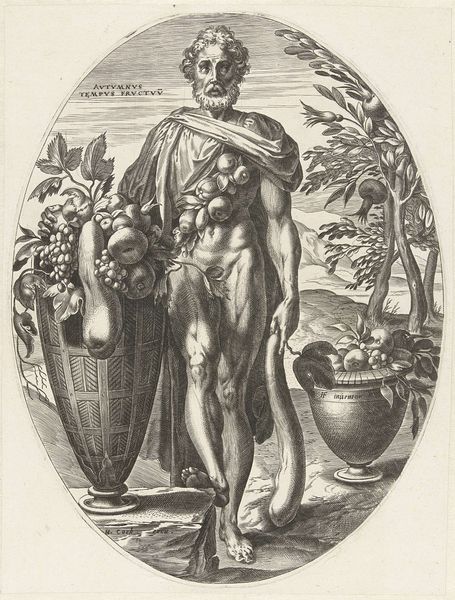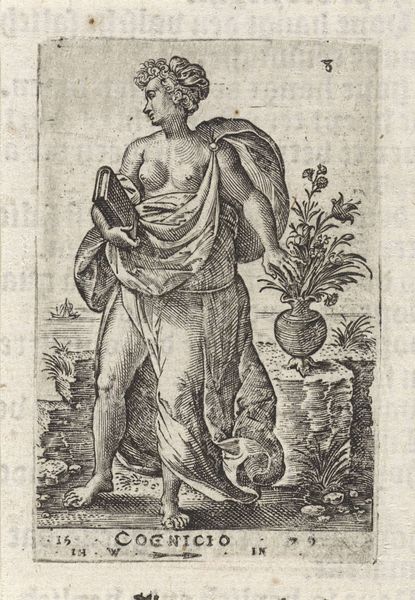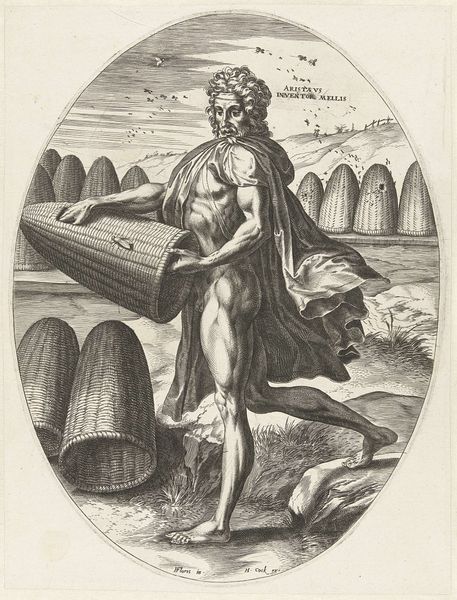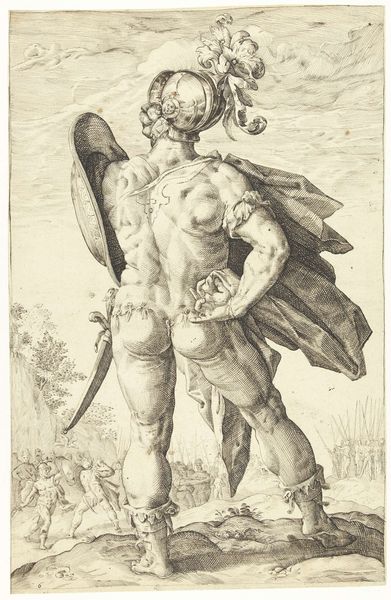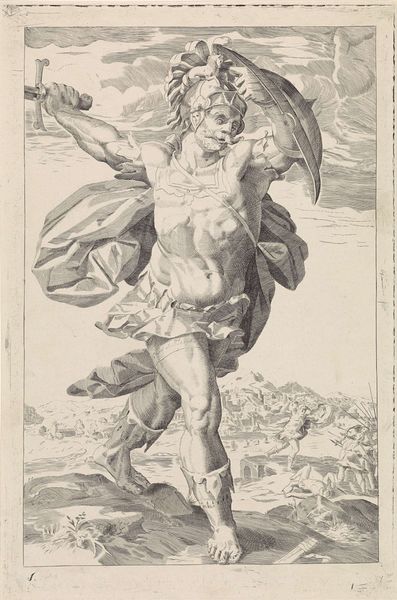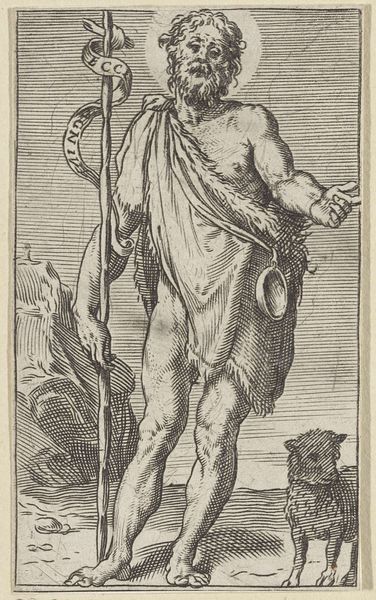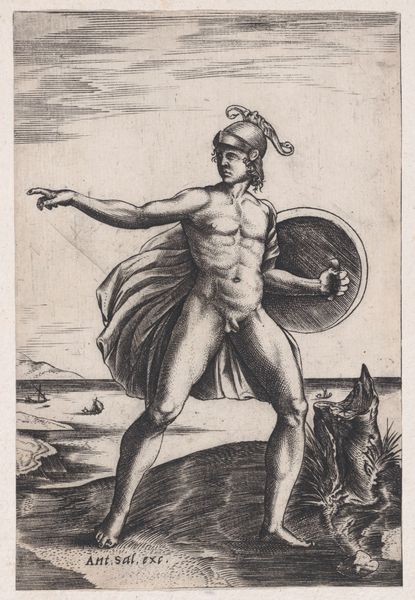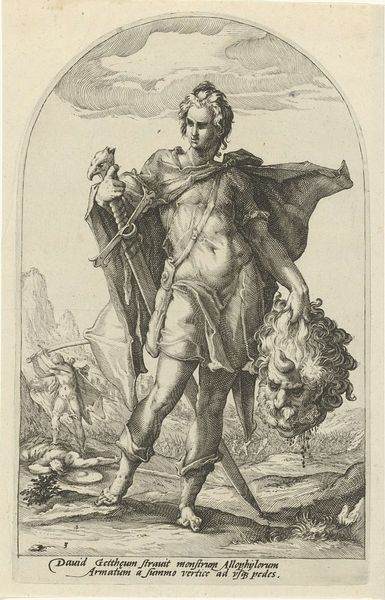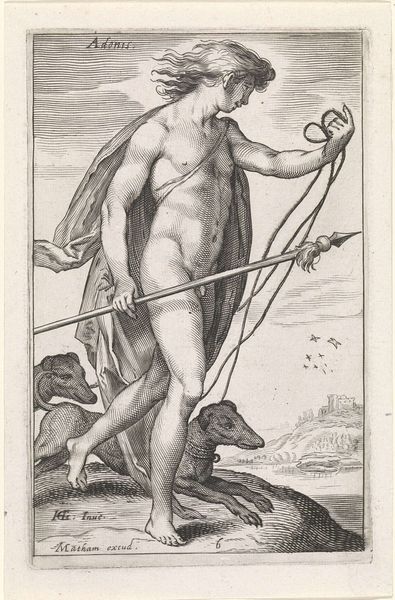
engraving
#
allegory
#
figuration
#
11_renaissance
#
history-painting
#
engraving
Dimensions: height 290 mm, width 220 mm
Copyright: Rijks Museum: Open Domain
Curator: Standing before us is Cornelis Cort’s 1565 engraving, "Vertumnus," now housed at the Rijksmuseum. Editor: The striking figure dominates the composition; it is quite statuesque and imposing despite the rather soft execution of the engraved lines. Curator: Indeed. Cort based this engraving on a design by Frans Floris. "Vertumnus" is a fascinating case study of Renaissance visual culture, aligning with broader humanist interests in classical mythology. He’s presented here as the Roman god of seasons, change, and plant growth. This depiction participates in a revival of classical themes within a 16th-century context, mirroring efforts to legitimize art through classical allusion. Editor: The way the lines coalesce to give form to Vertumnus's physique is particularly noteworthy. Note the texture of his skin, the play of light and shadow across his muscles – the engraving is very skilled. Then, there's the contrast between the detailed floral wreath and the plain background that lends a focal point to the figure. The artist truly understood the technical aspects of the medium to make Vertumnus feel so alive. Curator: And let's not forget what Vertumnus signifies. He embodies the garden and orchard’s abundance. Depictions such as this would function to idealize nature but also underscore human agency, our role in cultivation and improvement, key Renaissance values. Prints such as these were important, as it allowed circulation to those who didn't have the resources to possess great art or to travel. Editor: Agreed, the engraving format is perfect for disseminating knowledge and visual style widely, democratizing access to classical themes. What lingers with me most, though, is the serene balance achieved. Despite the complex layering of details – flora, fauna, the textured rocks – there’s a harmonious rhythm that unites everything into one visually gratifying experience. Curator: I find myself appreciating how Cort uses Vertumnus not just as a subject, but as an agent who connects us to that period's prevailing ideas about art's capacity to embody history, mythology, and society itself. Editor: For me, the genius resides in how Cort’s expert manipulation of line and form conveys that same humanist idea; through artistic skill alone, he captures and evokes not only a historical moment but enduring elements of beauty and meaning.
Comments
No comments
Be the first to comment and join the conversation on the ultimate creative platform.

